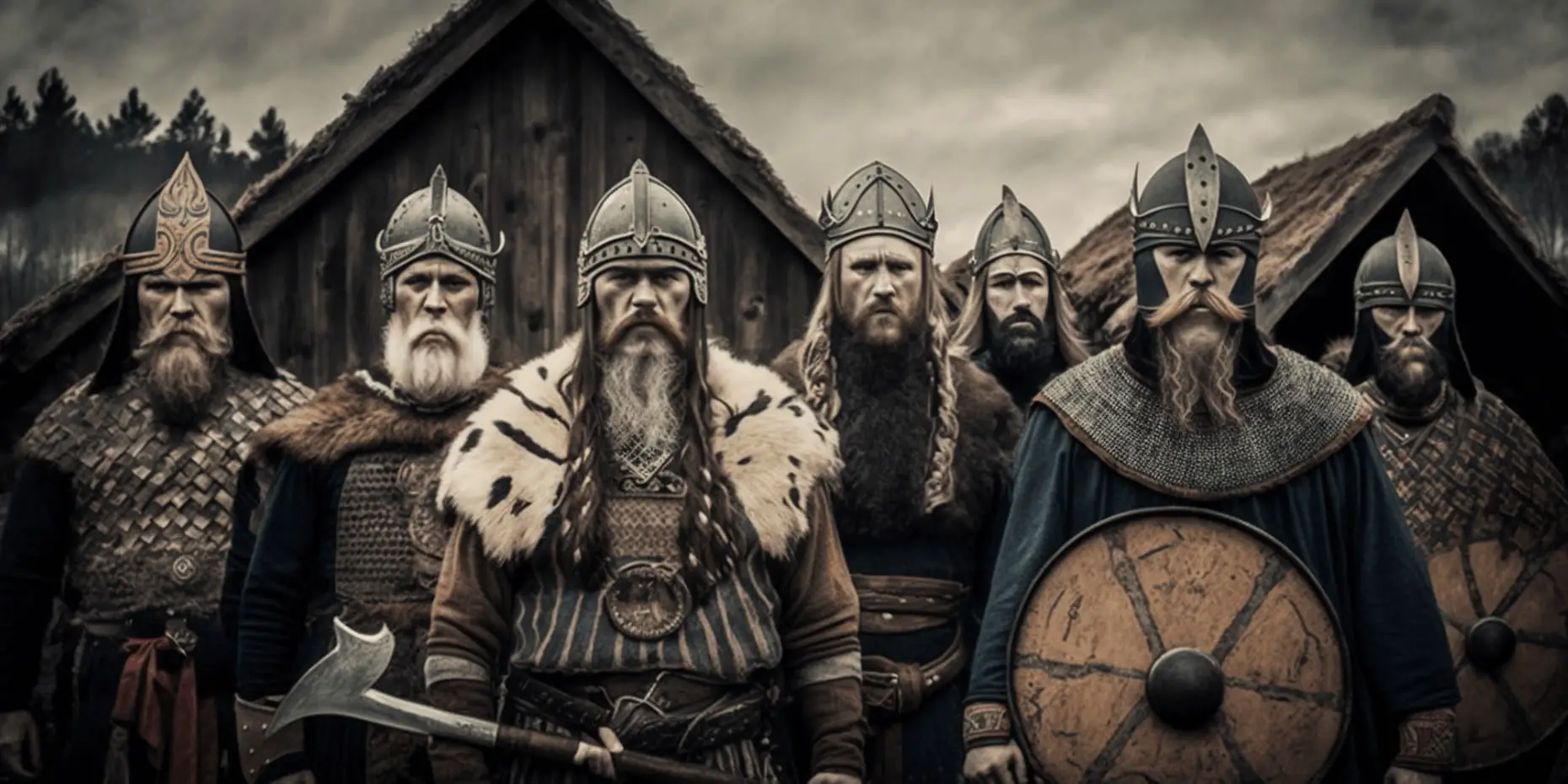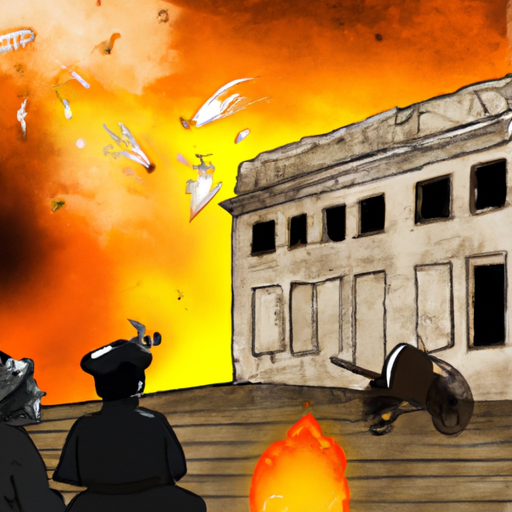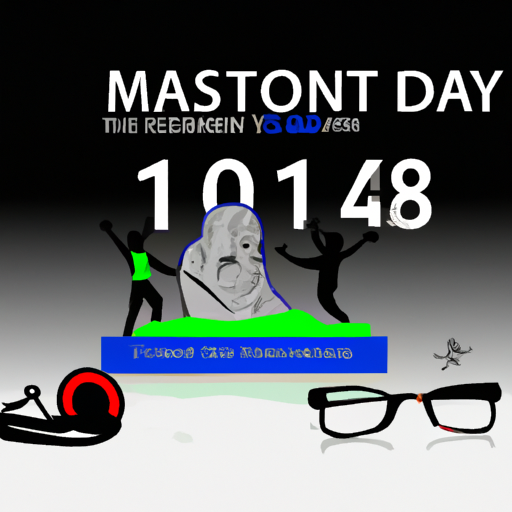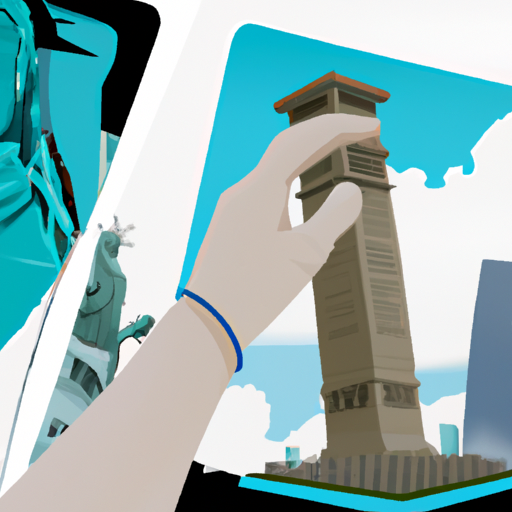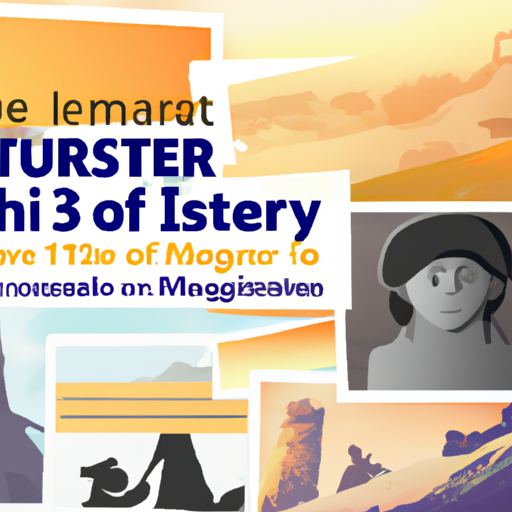The Historical Legacy of the Vikings: Uncovering the Human Story
A mysterious saga of courage, strength, and resilience – that is the legacy of the Vikings. An ancient civilization whose daring voyages of exploration opened up new trade routes, brought them into contact with cultures around the world, and left a lasting impression on history. From their earliest days in Scandinavia to their later raids across Europe and beyond, they were a people of conquest and craftsmanship, creating intricate jewelry and weapons that are still admired today. Unearth the remarkable story of these legendary warriors and uncover how they shaped our history.
.
Introduction
The Vikings, a topic of much deliberation and contention, have a captivating past. It is no secret that they were fierce warriors and plunderers who caused mayhem in Europe from the 8th to 11th centuries. However, their culture was intricate and advanced in its own right – they held respect for honor and justice, were confident of an afterlife, and had a wide-reaching commerce system stretching as far as Asia. Despite there being much more to uncover about these ancient people, it is generally accepted that they were indeed human.
– The Historical Origins of the Viking People
A people shrouded in mystery, the Vikings have a legacy that continues to captivate and perplex. Emerging from Scandinavia in the 8th century, they were renowned for their seafaring prowess and foraging expeditions which saw them traverse vast distances. Such activities brought about their expansion across Europe and beyond, leaving behind an indelible mark on many cultures.
Tracing their origins back to small tribal communities on the coasts of Norway and Sweden, the Vikings developed a distinct identity based upon their language, religion, culture and lifestyle – all of which were heavily influenced by their environment. As they spread out further, they began to raid coastal towns in England and Ireland around 800 AD – marking the beginning of what is known as the Viking Age.
This period was characterised by an increase in power as well as trading networks that stretched as far as Constantinople (modern-day Istanbul). In addition to exchanging goods such as furs and walrus ivory, slaves were also taken from these raids and sold or used as labor. The end of this era came with William the Conqueror’s Norman Conquest of England in 1066 AD at the Battle of Hastings.
Despite this shift in culture, many aspects of Viking life still remain today; from place names to customs such as drinking horns and rune stones – a testament to a rich history that is sure to remain forever perplexing.
– Examining Viking Society and Culture Throughout History
For centuries, the Vikings have been a part of history, their culture and society evolving as time passed. In the 8th to 11th centuries, they spread far and wide, leaving an unforgettable mark on the world. To gain insight into how they lived through different eras, let us explore Viking society and culture.
In 793 AD, raids began with the attack on Lindisfarne abbey in England. This was followed by an expansion period where settlements were established across Europe and beyond. In these small communities, chieftains or kings led them while social hierarchies were strictly maintained – jarls (aristocrats), karls (commoners), thralls (slaves) and freedmen all had distinct roles.
Vikings were heavily devoted to warfare and raiding but also adhered to their religious beliefs strongly. Norse mythology was integral to their lives – from religious practices to art and storytelling – gods such as Odin, Thor, Freya, Loki and Baldur had specific duties in their pantheon.
Their material culture was also affluent – woodworking and metalworking crafts were present; ships designed for speed and manoeuvrability enabled them to traverse great distances; weapons like swords, axes, spears, shields and helmets provided protection during battles; tools such as sickles helped with farming or hunting activities.
Thus it is evident that the Vikings left an enduring impression on our world today – from their spiritual faith to their material culture – all of which can be observed when examining Viking society throughout history.
– Exploring Viking Interactions with Other Human Groups
The Vikings’ legacy of interaction with other human groups is an intriguing one. During the Viking Age (roughly 793-1066 CE), their longboats took them to distant lands, facilitating raids on coastal settlements and trade routes with other cultures. Ibn Fadlan’s account of his journey through the Baltic Sea in 921 CE provides insight into a Viking trading expedition to Russia. Warfare and alliances were also formed, such as Alfred the Great’s alliance with Danish Vikings against invading forces from Norway and Denmark in 885 CE, or King Canute I’s alliance with Norwegian Vikings against England’s King Edmund II in 1016 CE.
Eventually, some Vikings settled abroad in places like Britain, Ireland, France and even parts of Italy – forming more permanent relationships with these new cultures and often intermarrying or exchanging customs. For example, Old Norse language, Norse paganism and skaldic poetry were brought by Viking settlers to Britain – influences that still linger today.
It is evident that during the Viking Age, the Norse left a lasting impact on European history through their interactions with other peoples.
– The Influence of Vikings on Modern Human History
The Vikings, a seafaring people of Scandinavia, left an indelible mark on the course of human history. During their era (793-1066 CE), they traversed immense distances by sea, from Greenland to North America and beyond; their travels leaving a legacy of settlements, artifacts, and cultural exchanges with other peoples. They brought influences to European countries such as England and France in terms of language and culture. Political development in nations like Norway, Denmark, Sweden, Iceland, Finland, Estonia, Latvia, Lithuania, Karelia (formerly part of Finland) and Normandy (present-day France) was also shaped by the Vikings.
Their skill as navigators enabled them to voyage far out at sea using advanced technology such as the sunstone—a type of crystal that aided them in determining location—and through expert shipbuilding techniques that crafted vessels able to withstand long trips across oceans. This allowed them access to remote places like Iceland and Greenland. Additionally, Christianity was introduced to Scandinavia during this period due to Viking leaders converting over time—leading to the establishment of religious orders like monasteries that served as centers for learning and scholarship.
The reverberations of the Viking Age are still felt today in many aspects; from language (Old Norse words remain part of English vocabulary), culture (many traditional Scandinavian customs are still practiced today), religion (Christianity was established during this period), politics (the establishment of powerful kingdoms) ,and exploration/navigation (advanced shipbuilding techniques enabled them to explore distant lands). It is clear that without them we would not have our current understanding or appreciation for human history today.
– Analyzing the Legacy of the Vikings in Human History
A period of tumult and exploration, the Viking Age began in the late 8th century when Scandinavian warriors ventured out to raid and trade with other parts of Europe. Their maritime prowess enabled them to traverse far from home, while their Old Norse language left a lasting mark on English words such as “husband” or “law.” Additionally, they helped spread Christianity throughout Europe during this time.
The legacy of these seafaring warriors has been widely documented by historians over the years. They left behind physical evidence such as burial mounds and rune stones that shed light on their beliefs and values, while their influence can still be felt in many aspects of our lives today. From their daring explorations to their cultural contributions, it’s clear that the Vikings had an enduring impact on European society for centuries after they were gone.
conclusion

Perplexing and bursting, a mysterious people of yore once roamed the Scandinavian lands, their influence on European history undeniable. Not unlike others of their era, they were humans with a culture all their own. Though renowned for their warrior-like ferocity and exploratory spirit, these Vikings were also adept farmers, artisans, merchants and mariners.
.
Some questions with answers
Q1: Who were the Vikings?
A1: The Vikings were a group of Scandinavian seafaring warriors who raided and traded from their Northern European homelands across wide areas of Europe, Asia, and the North Atlantic islands from the late 8th to the mid-11th centuries.
Q2: Where did they come from?
A2: The Vikings originated from what is now modern Denmark, Norway and Sweden. They are also known as Norsemen or Northmen.
Q3: Were Vikings human?
A3: Yes, Vikings were humans. They were a group of people with their own culture and beliefs.
Q4: What kind of weapons did they use?
A4: The Vikings used a variety of weapons including swords, spears, axes, bows, and shields. They also had access to advanced metalworking techniques which allowed them to create superior weaponry compared to other cultures at the time.
Q5: What impact did they have on history?
A5: The Viking Age was an important period in European history. It marked a period of expansion and exploration by the Norse people that had a lasting influence on many parts of Europe. Their raids and conquests changed the political landscape in many countries while their trade networks brought new goods and ideas into circulation.
